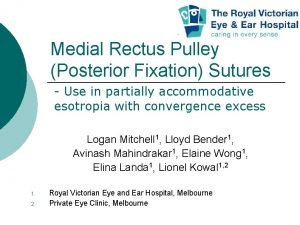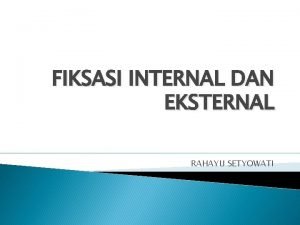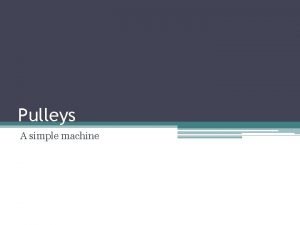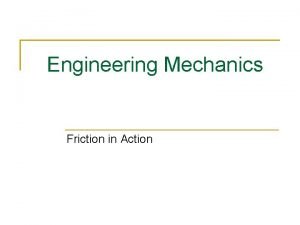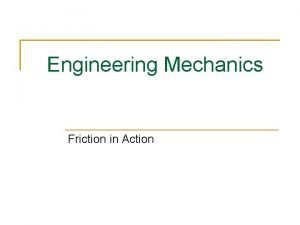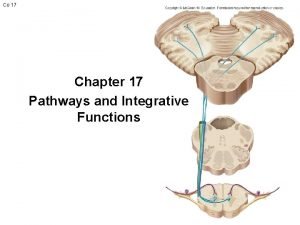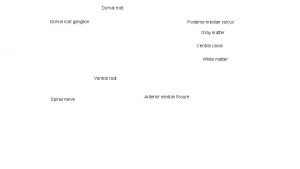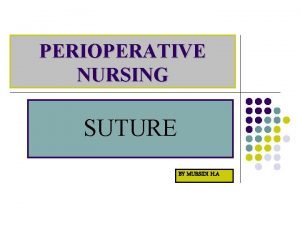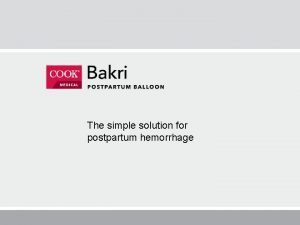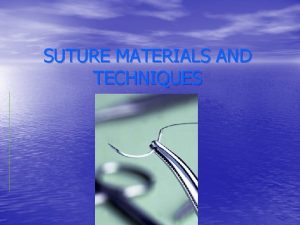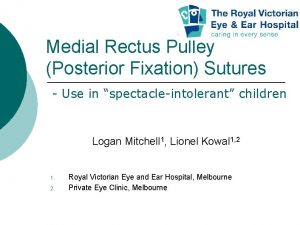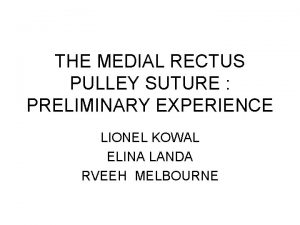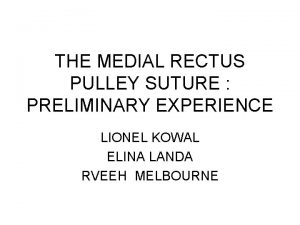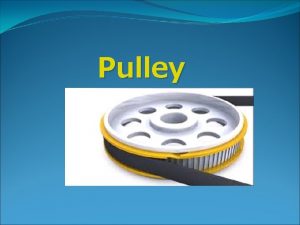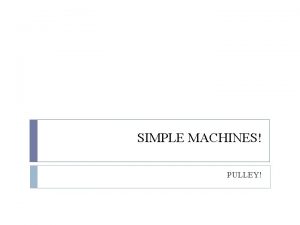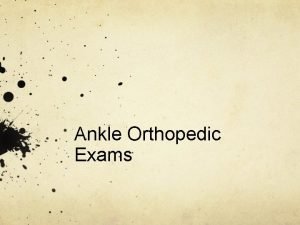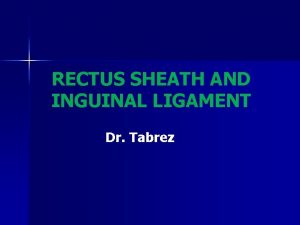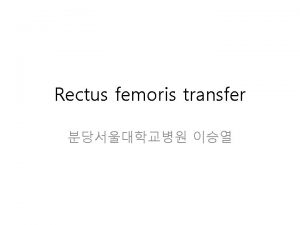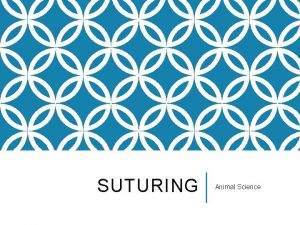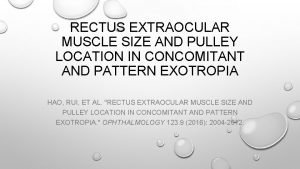Medial Rectus Pulley Posterior Fixation Sutures Use in













- Slides: 13

Medial Rectus Pulley (Posterior Fixation) Sutures - Use in partially accommodative esotropia with convergence excess Logan Mitchell 1, Lloyd Bender 1, Avinash Mahindrakar 1, Elaine Wong 1, Elina Landa 1, Lionel Kowal 1, 2 1. 2. Royal Victorian Eye and Ear Hospital, Melbourne Private Eye Clinic, Melbourne

Accommodative Esotropia with Convergence Excess Example: ET 35, ET' 55 Surgical undercorrections common Parks' formula: Kushner's formula: distance angle + 1 mm = 6. 0 mm distance angle + 10% of disparity = 7. 0 mm NB = operating for near angle etc. . .

Rx of Very large amounts of Convergence Excess ET 15 ET’ 50 What surgical dosage BMR? o BMR (even with augmented dose) unlikely to correct near and distance deviation

Medial Rectus Pulley Suture Original MR insertion A P = muscle sutured to its pulley. This now restricts full a. Dduction A P Medial orbital wall 18º P PULLE Y B MR A, B : ant & post extent of pulley sleeve

Medial Rectus Pulley Sutures in Accommodative Esotropia

Faden Sutures: a revised explanation for their effect Clark et al, AJO 1999 Primary gaze 18 degrees ADd Original MR insertion A A 18º P P PULLEY Medial orbital wall B MR P prevents normal MR movement through MR pulley - Adduction restricted by P. . as well as its moment arm A, B : anteffect & post on extent of pulley sleeve B MR

Pulley Sutures A Melbourne experience 24 children partially accommodative esotropia near-distance disparity ≥ 15∆ >1 month follow-up

Pulley Sutures A Melbourne experience Surgery Bimedial recessions targeting average of near and distance deviations + pulley sutures +/- inferior oblique recession as needed

Pre-operative Characteristics Variable Mean Age at surgery (yrs) 5. 4 Distance esodeviation (∆) 22. 4 Near esodeviation (∆) 48. 8 Distance-near disparity (∆) 26. 8 Refraction (SE dioptres) 3. 0

Post-operative Outcomes Post-op outcome Number Mean distance esodeviation (∆) Distance alignment between orthophoria and 10 ∆ esotropia (%) Mean near-distance disparity (∆) Mean decrease in near-distance disparity (∆ (%)) 1 -3 months 3 -6 months 12+ months 24 12 9 -0. 8 1. 7 75 75 89 4. 8 2. 4 3. 6 22. 0 (79. 7%) 23. 5 (88. 0%) 21. 3 (87. 4%)

Effect on Near-Distance Disparity

Conclusion • Logical application of new understanding of orbital anatomy • Safe • Effective at decreasing near excess • Very low risk persistent over-correction • A technique to be considered in difficult cases

Thank you
 Pulley sutures
Pulley sutures Fiksasi fraktur adalah
Fiksasi fraktur adalah Pulleys uses
Pulleys uses A flat belt connects pulley a to pulley b
A flat belt connects pulley a to pulley b Belt friction
Belt friction Medial lemniscus pathway
Medial lemniscus pathway Posterior median fissure
Posterior median fissure Status anxiety
Status anxiety Color coding of sutures
Color coding of sutures Postpartum hemorrhage treatment algorithm
Postpartum hemorrhage treatment algorithm Ideal suture material
Ideal suture material Axial skeleton skull chapter 5
Axial skeleton skull chapter 5 Body sutures
Body sutures Strangulated hernia signs
Strangulated hernia signs
